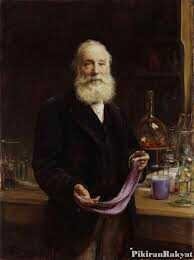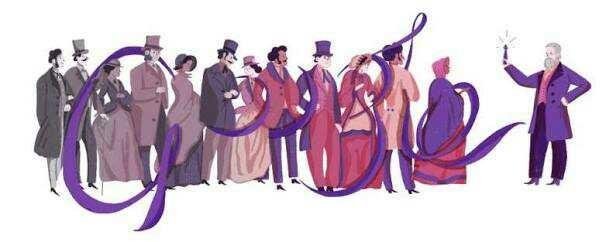Google Doodle currently respects the chemist Sir William Henry Perkin, who accidentally found a purple dye purple while trying to synthesize anti-malarial drugs.
During the spring of 1856, most of the students in London enjoyed a brief respite from their studies, but 18-year-old William Henry Perkin worked hard in the chemistry lab while in his upstairs houe apartment. Perkin and his professor have spent the last three years trying to find a way to make quinine, a chemical found in the bark of a cinchona tree, which at the time was the best treatment for malaria. Because it had to be removed from cinchona bark, the drug was expensive, but August Wilhelm von Hofmann, Perkin professor at the Royal College of Chemistry, thought it could be produced cheaper in the lab. Perkin has spent the last three years as Hofmann's assistant in handling this issue, and during the Easter holidays rolling around 1856,
But things are not going well. Legend has it that Perkin cleans the glass after another attempt fails to produce quinine, as he realizes that diluting the deep purple mud with alcohol leaves a bright purple stain on the glass. Perkin, in addition to chemists, is an avid painter and photographer, so he immediately sees the potential of a bright purple dye - if he can produce it reliably in sufficient quantities. He moved his work to the garden warehouse so Hofmann did not pay attention to his extracurricular work, and later that year he applied for a patent on the dye he called mauveine.

Mauveine is the first synthetic dye for fabrics; any color on the fabric in the mid-1800s should be extracted from something in nature, such as berry juice or beetle exoskeleton. The best purple dye available at the time was made of mollusc slime, which was difficult and expensive to extract. Mauveine is a cheaper and faster color alternative, and at the height of the industrial revolution, Perkin's time is perfect.
Two American chemists RB Woodward and WE Doering finally succeeded in synthesizing quinine in 1944, but cinchona bark is still the most practical and economical source.

https://googleweblight.com/i?u=https://www.forbes.com/sites/kionasmith/2018/03/12/mondays-google-doodle-celebrates-chemist-sir-william-henry-perkin/&hl=en-ID
https://www.google.co.id/search?q=Sir+William+Henry+Perkin&hl=en&prmd=imnv&source=lnms&sa=X&ved=0ahUKEwjsx_2Sk-fZAhXBLo8KHVhkBmQQ_AUIECgA&biw=360&bih=560&dpr=2